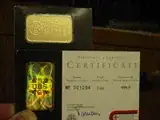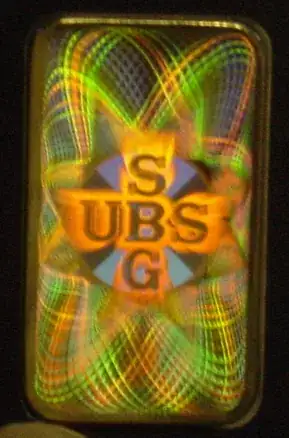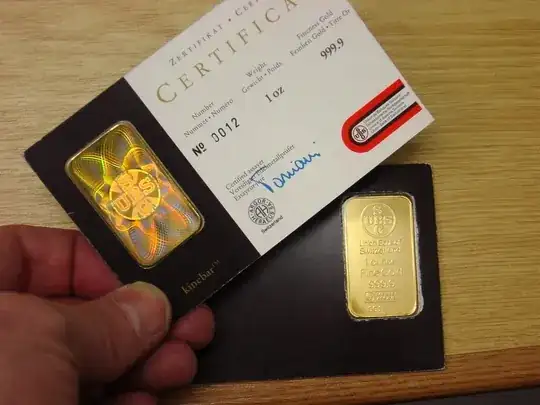Reading further about gold after reading about Warren Buffet's 20 meter gold cube estimate in the BBC's How much gold is there in the world? I came across images of a kinebar which is an optical kinoform-imprinted bar of gold. The optical kinoform is different things to different people, so here, think replicated grating or plastic hologram for "authenticity" seals.
Gold atoms on gold surfaces (which are just more gold atoms) are particularly mobile. The particularly large mobility of gold atoms on surfaces, including gold, is well known, and the videos below offer some interesting electron video micrography of this.
If I stamped a standard 1200 line/mm sine wave grating with a 500 nm peak-to-peak amplitude into pure gold and left it at 20C, would the sinusoidal shape be roughly maintained and the amplitude decay over time with roughly a simple exponential?
If so, roughly what would be the half-life of the amplitude? A billion years? A century? Would the half-life be itself exponential in temperature, or behave more like $1/T^p$ (inverse temperature to some low power)?
From Wikipedia's article on Surface Diffusion I see that a jumping or hopping rate $\Gamma$ can be estimated from the simple expression:
$$\Gamma=\nu \ exp\left(-\frac{E_{diff}}{k_BT}\right) $$
where $\nu$ is some vibrational frequency and $E_diff$ is some minimum energy necessary for a hop to occur, and these would be properties that would have to be characterized for gold atoms on gold surfaces, and would I'm guessing be only slowly varying functions of temperature compared to the exponential.
But I don't know how to go from here to the long-term statistical evolution of the topography.
Edit: After further thought, I know I have to find a way to model a net flux away from the convex peaks and into the concave troughs, but I don't have any idea how to do that a priori. I think experiments have been done for nano-scale gratings in gold where the "half-life" is shorter, so there may be some helpful published result somewhere.
Video: Au particle on surface
Video: Au surface dislocation:
In situ TEM movie of a (001) gold terrace viewed along a 110 direction parallel to the terrace surface. It is recorded with a speed of 20 frames per second in the spherical aberration-corrected Titan at room temperature. At t=0:10, the 3 atomic columns on top merge with the row of column below it and a dislocation is formed. Atomic column at the right side of the top layer start to disppear. At t=2:08 the dislocation disappears by ejected one atomic column in the viewing direction (dislocation line direction).
above: File:Kinebar2.gif. From here.
above: "A Kinebar". From here.
above: "1-oz UBS gold kinebar." From here.


